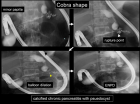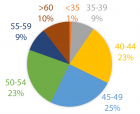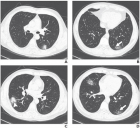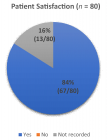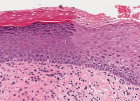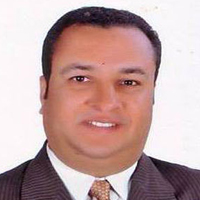Abstract
Literature Review
The protective potential of Carbonic Anhydrase VI (CA VI) against tooth decay in children: A systematic review of the literature
Daniele de Cassia Rodrigues Picco*, Lenita Marangoni Lopes, Carolina Steiner-Oliveira and Marinês Nobre dos Santos
Published: 02 August, 2022 | Volume 6 - Issue 1 | Pages: 021-027
Carbonic anhydrase VI (CA VI) catalyzes the reversible hydration of carbon dioxide in saliva with possible pH regulation, taste perception, and tooth formation effects.
Objective: The aim of this work was to undertake a systematic review regarding the relationship between the expression/activity of CA VI in saliva and in dental biofilm and caries experience.
Study design: Five databases were searched until February 2020. The composition was based on the PRISMA statement and on the PICOS model. First author, year, subject characteristics, analysis performed, outcome, measures & variables were extracted. The used terms were “carbonic anhydrase VI”, “saliva”, “dental biofilm” and “dental caries”.
Results: Five studies in the English language were selected for this systematic review and the main discussed topics were the expression/activity of CA VI in saliva and/or in the dental biofilm of children, and its relationship with dental caries.
Conclusion: Salivary carbonic anhydrase plays an important role in the caries dynamics process since there is an association between the expression/activity of CA VI in saliva and the experience of caries. Thus, this protein can predict the risk of dental caries in young patients.
Read Full Article HTML DOI: 10.29328/journal.jcad.1001028 Cite this Article Read Full Article PDF
Keywords:
Carbonic anhydrases; Saliva; Dental plaque; “Children” and “Dental caries
References
- Supuran CT. Carbonic anhydrases--an overview. Curr Pharm Des. 2008;14(7):603-14. doi: 10.2174/138161208783877884. PMID: 18336305.
- Reibring CG, El Shahawy M, Hallberg K, Kannius-Janson M, Nilsson J, Parkkila S, Sly WS, Waheed A, Linde A, Gritli-Linde A. Expression patterns and subcellular localization of carbonic anhydrases are developmentally regulated during tooth formation. PLoS One. 2014 May 1;9(5):e96007. doi: 10.1371/journal.pone.0096007. PMID: 24789143; PMCID: PMC4006843.
- Kivela J, Parkkila S, Parkkila AK, Leinonen J, Rajaniemi H. Salivary carbonic anhydrase isoenzyme VI. J Physiol. 1999 Oct 15;520 Pt 2(Pt 2):315-20. doi: 10.1111/j.1469-7793.1999.t01-1-00315.x. PMID: 10523402; PMCID: PMC2269599.
- Kivelä J, Parkkila S, Waheed A, Parkkila AK, Sly WS, Rajaniemi H. Secretory carbonic anhydrase isoenzyme (CA VI) in human serum. Clin Chem. 1997 Dec;43(12):2318-22. PMID: 9439449.
- Kimoto M, Kishino M, Yura Y, Ogawa Y. A role of salivary carbonic anhydrase VI in dental plaque. Arch Oral Biol. 2006 Feb;51(2):117-22. doi: 10.1016/j.archoralbio.2005.04.007. Epub 2005 Jun 14. PMID: 15961059.
- Vitorino R, Lobo MJ, Duarte J, Ferrer-Correia AJ, Tomer KB, Dubin JR, Domingues PM, Amado FM. In vitro hydroxyapatite adsorbed salivary proteins. Biochem Biophys Res Commun. 2004 Jul 23;320(2):342-6. doi: 10.1016/j.bbrc.2004.05.169. PMID: 15219832.
- Bardow A, Moe D, Nyvad B, Nauntofte B. The buffer capacity and buffer systems of human whole saliva measured without loss of CO2. Arch Oral Biol. 2000 Jan;45(1):1-12. doi: 10.1016/s0003-9969(99)00119-3. PMID: 10669087.
- Lips A, Antunes LS, Antunes LA, Pintor AVB, Santos DABD, Bachinski R, Küchler EC, Alves GG. Salivary protein polymorphisms and risk of dental caries: a systematic review. Braz Oral Res. 2017 Jun 5;31:e41. doi: 10.1590/1807-3107BOR-2017.vol31.0041. PMID: 28591238.
- Peres RC, Camargo G, Mofatto LS, Cortellazzi KL, Santos MC, Nobre-dos-Santos M, Bergamaschi CC, Line SR. Association of polymorphisms in the carbonic anhydrase 6 gene with salivary buffer capacity, dental plaque pH, and caries index in children aged 7-9 years. Pharmacogenomics J. 2010 Apr;10(2):114-9. doi: 10.1038/tpj.2009.37. Epub 2009 Sep 1. Erratum in: Pharmacogenomics J. 2010 Jun;10(3):243. Santos, M N [corrected to Nobre-dos-Santos, M]. PMID: 19721466.
- Frasseto F, Parisotto TM, Peres RC, Marques MR, Line SR, Nobre Dos Santos M. Relationship among salivary carbonic anhydrase VI activity and flow rate, biofilm pH and caries in primary dentition. Caries Res. 2012;46(3):194-200. doi: 10.1159/000337275. Epub 2012 Apr 13. PMID: 22508543.
- Picco DCR, Lopes LM, Rocha Marques M, Line SRP, Parisotto TM, Nobre Dos Santos M. Children with a Higher Activity of Carbonic Anhydrase VI in Saliva Are More Likely to Develop Dental Caries. Caries Res. 2017;51(4):394-401. doi: 10.1159/000470849. Epub 2017 Jun 21. PMID: 28633135.
- Esberg A, Haworth S, Brunius C, Lif Holgerson P, Johansson I. Carbonic Anhydrase 6 Gene Variation influences Oral Microbiota Composition and Caries Risk in Swedish adolescents. Sci Rep. 2019 Jan 24;9(1):452. doi: 10.1038/s41598-018-36832-z. PMID: 30679524; PMCID: PMC6345836.
- Baker JL, Edlund A. Exploiting the Oral Microbiome to Prevent Tooth Decay: Has Evolution Already Provided the Best Tools? Front Microbiol. 2019 Jan 11;9:3323. doi: 10.3389/fmicb.2018.03323. PMID: 30687294; PMCID: PMC6338091.
- Szabó I. Carbonic anhydrase activity in the saliva of children and its relation to caries activity. Caries Res. 1974;8(2):187-91. doi: 10.1159/000260107. PMID: 4209465.
- Yan G, Huang W, Xue H, Jia Y, Yang D. [Relationship between dental caries and salivary proteome by electrospray ionization ion-trap tandem mass spectrometry in children aged 6 to 8 years]. Hua Xi Kou Qiang Yi Xue Za Zhi. 2014 Jun;32(3):297-302. Chinese. doi: 10.7518/hxkq.2014.03.020. PMID: 25033650; PMCID: PMC7041220.
- Kivelä J, Parkkila S, Parkkila AK, Rajaniemi H. A low concentration of carbonic anhydrase isoenzyme VI in whole saliva is associated with caries prevalence. Caries Res. 1999 May-Jun;33(3):178-84. doi: 10.1159/000016514. PMID: 10207192.
- Picco DCR, Marangoni-Lopes L, Parisotto TM, Mattos-Graner R, Nobre-Dos-Santos M. Activity of Carbonic Anhydrase VI is Higher in Dental Biofilm of Children with Caries. Int J Mol Sci. 2019 May 30;20(11):2673. doi: 10.3390/ijms20112673. PMID: 31151296; PMCID: PMC6600353.
- Oztürk LK, Furuncuoğlu H, Atala MH, Uluköylü O, Akyüz S, Yarat A. Association between dental-oral health in young adults and salivary glutathione, lipid peroxidation and sialic acid levels and carbonic anhydrase activity. Braz J Med Biol Res. 2008 Nov;41(11):956-9. doi: 10.1590/s0100-879x2008005000048. Epub 2008 Oct 31. PMID: 18982196.
- Liberati A, Altman DG, Tetzlaff J, Mulrow C, Gøtzsche PC, Ioannidis JP, Clarke M, Devereaux PJ, Kleijnen J, Moher D. The PRISMA statement for reporting systematic reviews and meta-analyses of studies that evaluate health care interventions: explanation and elaboration. J Clin Epidemiol. 2009 Oct;62(10):e1-34. doi: 10.1016/j.jclinepi.2009.06.006. Epub 2009 Jul 23. PMID: 19631507.
- Saaiq M, Ashraf B. Modifying "Pico" Question into "Picos" Model for More Robust and Reproducible Presentation of the Methodology Employed in A Scientific Study. World J Plast Surg. 2017 Sep;6(3):390-392. PMID: 29218294; PMCID: PMC5714990.
- Carvalho, APV, Silva, V, Grande, AJ. Assessment of bias risk from trials randomized by the tool of the Cochrane Collaboration. Diagn Tratamento. 2013;18(1):38-44.
- Viswanathan M, Ansari MT, Berkman ND, et al. Assessing the Risk of Bias of Individual Studies in Systematic Reviews of Health Care Interventions. In: Methods Guide for Effectiveness and Comparative Effectiveness Reviews. AHRQ Methods for Effective Health Care. Rockville (MD): Agency for Healthcare Research and Quality (US); 2008. http://www.ncbi.nlm.nih.gov/books/NBK91433/. Accessed April 8, 2019.
- Borghi GN, Rodrigues LP, Lopes LM, Parisotto TM, Steiner-Oliveira C, Nobre-Dos-Santos M. Relationship among α amylase and carbonic anhydrase VI in saliva, visible biofilm, and early childhood caries: a longitudinal study. Int J Paediatr Dent. 2017 May;27(3):174-182. doi: 10.1111/ipd.12249. Epub 2016 Jul 19. PMID: 27430359.
- Gao X, Jiang S, Koh D, Hsu CY. Salivary biomarkers for dental caries. Periodontol 2000. 2016 Feb;70(1):128-41. doi: 10.1111/prd.12100. PMID: 26662487.
- Lalloo R, Tadakamadla SK, Kroon J, Tut O, Kularatna S, Boase R, Kapellas K, Gilchrist D, Cobbledick E, Rogers J, Johnson NW. Salivary characteristics and dental caries experience in remote Indigenous children in Australia: a cross-sectional study. BMC Oral Health. 2019 Jan 17;19(1):21. doi: 10.1186/s12903-018-0692-2. PMID: 30654791; PMCID: PMC6337781.
- Edgar, M., Dawes, C., O´Mullane, D. Composition, functions and protective effects. In: Saliva and Oral Health. São Paulo: Santos; 2010.
- Tenovuo J. Antimicrobial function of human saliva--how important is it for oral health? Acta Odontol Scand. 1998 Oct;56(5):250-6. doi: 10.1080/000163598428400. PMID: 9860091.
- Becks H, Wainwright WW. Human Saliva: IX. the Effect of Activation On Salivary Flow1. Journal of Dental Research. 1939;18(5):447-456. doi:10.1177/00220345390180050601
- Leinonen J, Kivelä J, Parkkila S, Parkkila AK, Rajaniemi H. Salivary carbonic anhydrase isoenzyme VI is located in the human enamel pellicle. Caries Res. 1999 May-Jun;33(3):185-90. doi: 10.1159/000016515. PMID: 10207193.
- Culp DJ, Robinson B, Parkkila S, Pan PW, Cash MN, Truong HN, Hussey TW, Gullett SL. Oral colonization by Streptococcus mutans and caries development is reduced upon deletion of carbonic anhydrase VI expression in saliva. Biochim Biophys Acta. 2011 Dec;1812(12):1567-76. doi: 10.1016/j.bbadis.2011.09.006. Epub 2011 Sep 16. PMID: 21945428; PMCID: PMC3205318.
- Singh S, Sharma A, Sood PB, Sood A, Zaidi I, Sinha A. Saliva as a prediction tool for dental caries: An in vivo study. J Oral Biol Craniofac Res. 2015 May-Aug;5(2):59-64. doi: 10.1016/j.jobcr.2015.05.001. Epub 2015 Jun 3. PMID: 26258015; PMCID: PMC4523584.
- Pandey P, Reddy NV, Rao VA, Saxena A, Chaudhary CP. Estimation of salivary flow rate, pH, buffer capacity, calcium, total protein content and total antioxidant capacity in relation to dental caries severity, age and gender. Contemp Clin Dent. 2015 Mar;6(Suppl 1):S65-71. doi: 10.4103/0976-237X.152943. PMID: 25821379; PMCID: PMC4374323.
- Kotwica J, Ciuk MA, Joachimiak E, Rowinski S, Cymborowski B, Bebas P. Carbonic anhydrase activity in the vas deferens of the cotton leafworm - Spodoptera littoralis (Lepidoptera: Noctuidae) controlled by circadian clock. J Physiol Pharmacol. 2006 Nov;57 Suppl 8:107-23. PMID: 17242477.
- Nobre dos Santos M, Melo dos Santos L, Francisco SB, Cury JA. Relationship among dental plaque composition, daily sugar exposure and caries in the primary dentition. Caries Res. 2002 Sep-Oct;36(5):347-52. doi: 10.1159/000065959. PMID: 12399695.
- Parisotto TM, Steiner-Oliveira C, Duque C, Peres RC, Rodrigues LK, Nobre-dos-Santos M. Relationship among microbiological composition and presence of dental plaque, sugar exposure, social factors and different stages of early childhood caries. Arch Oral Biol. 2010 May;55(5):365-73. doi: 10.1016/j.archoralbio.2010.03.005. Epub 2010 Apr 9. PMID: 20381791.
Figures:
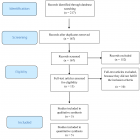
Figure 1
Similar Articles
-
Fabrication of Lingual Retainer made easyMadhvi Bhardwaj, Shantanu Khattri,Rohit Kulshrestha*. Fabrication of Lingual Retainer made easy. . 2017 doi: 10.29328/journal.hjd.1001005; 1: 026-027
-
Staining susceptibility of recently developed resin composite materialsOlivier Duc,Emilie Betrisey, Enrico Di Bella, Ivo Krejci,Stefano Ardu*. Staining susceptibility of recently developed resin composite materials. . 2018 doi: 10.29328/journal.jcad.1001006; 2: 001-007
-
Tooth erosion and the role of pepsin refluxJeanine Fisher,Graham Porter,Stuart Graham,Christos Ziaras,Andrew D Woodcock,Peter W Dettmar*. Tooth erosion and the role of pepsin reflux. . 2020 doi: 10.29328/journal.jcad.1001016; 4: 009-014
-
The protective potential of Carbonic Anhydrase VI (CA VI) against tooth decay in children: A systematic review of the literatureDaniele de Cassia Rodrigues Picco*,Lenita Marangoni Lopes,Carolina Steiner-Oliveira,Marinês Nobre dos Santos. The protective potential of Carbonic Anhydrase VI (CA VI) against tooth decay in children: A systematic review of the literature. . 2022 doi: 10.29328/journal.jcad.1001028; 6: 021-027
Recently Viewed
-
Leiomyosarcoma in pregnancy: Incidental finding during routine caesarean sectionToon Wen Tang*,Phoon Wai Leng Jessie. Leiomyosarcoma in pregnancy: Incidental finding during routine caesarean section. Clin J Obstet Gynecol. 2021: doi: 10.29328/journal.cjog.1001094; 4: 092-095
-
Adult Neurogenesis: A Review of Current Perspectives and Implications for Neuroscience ResearchAlex, Gideon S*,Olanrewaju Oluwaseun Oke,Joy Wilberforce Ekokojde,Tolulope Judah Gbayisomore,Martina C. Anene-Ogbe,Farounbi Glory,Joshua Ayodele Yusuf. Adult Neurogenesis: A Review of Current Perspectives and Implications for Neuroscience Research. J Neurosci Neurol Disord. 2024: doi: 10.29328/journal.jnnd.1001102; 8: 106-114
-
Late discover of a traumatic cardiac injury: Case reportBenlafqih C,Bouhdadi H*,Bakkali A,Rhissassi J,Sayah R,Laaroussi M. Late discover of a traumatic cardiac injury: Case report. J Cardiol Cardiovasc Med. 2019: doi: 10.29328/journal.jccm.1001048; 4: 100-102
-
A two-phase sonographic study among women with infertility who first had normal sonographic findingsKalu Ochie*,Abraham John C. A two-phase sonographic study among women with infertility who first had normal sonographic findings. Clin J Obstet Gynecol. 2022: doi: 10.29328/journal.cjog.1001117; 5: 101-103
-
Sinonasal Myxoma Extending into the Orbit in a 4-Year Old: A Case PresentationJulian A Purrinos*, Ramzi Younis. Sinonasal Myxoma Extending into the Orbit in a 4-Year Old: A Case Presentation. Arch Case Rep. 2024: doi: 10.29328/journal.acr.1001099; 8: 075-077
Most Viewed
-
Evaluation of Biostimulants Based on Recovered Protein Hydrolysates from Animal By-products as Plant Growth EnhancersH Pérez-Aguilar*, M Lacruz-Asaro, F Arán-Ais. Evaluation of Biostimulants Based on Recovered Protein Hydrolysates from Animal By-products as Plant Growth Enhancers. J Plant Sci Phytopathol. 2023 doi: 10.29328/journal.jpsp.1001104; 7: 042-047
-
Sinonasal Myxoma Extending into the Orbit in a 4-Year Old: A Case PresentationJulian A Purrinos*, Ramzi Younis. Sinonasal Myxoma Extending into the Orbit in a 4-Year Old: A Case Presentation. Arch Case Rep. 2024 doi: 10.29328/journal.acr.1001099; 8: 075-077
-
Feasibility study of magnetic sensing for detecting single-neuron action potentialsDenis Tonini,Kai Wu,Renata Saha,Jian-Ping Wang*. Feasibility study of magnetic sensing for detecting single-neuron action potentials. Ann Biomed Sci Eng. 2022 doi: 10.29328/journal.abse.1001018; 6: 019-029
-
Pediatric Dysgerminoma: Unveiling a Rare Ovarian TumorFaten Limaiem*, Khalil Saffar, Ahmed Halouani. Pediatric Dysgerminoma: Unveiling a Rare Ovarian Tumor. Arch Case Rep. 2024 doi: 10.29328/journal.acr.1001087; 8: 010-013
-
Physical activity can change the physiological and psychological circumstances during COVID-19 pandemic: A narrative reviewKhashayar Maroufi*. Physical activity can change the physiological and psychological circumstances during COVID-19 pandemic: A narrative review. J Sports Med Ther. 2021 doi: 10.29328/journal.jsmt.1001051; 6: 001-007

HSPI: We're glad you're here. Please click "create a new Query" if you are a new visitor to our website and need further information from us.
If you are already a member of our network and need to keep track of any developments regarding a question you have already submitted, click "take me to my Query."






